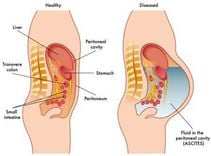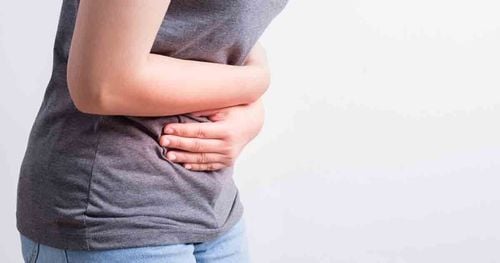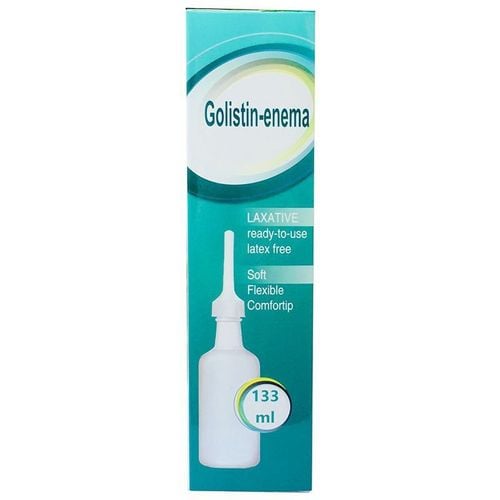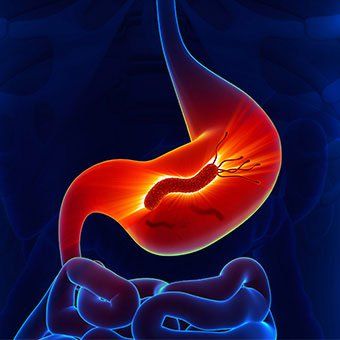This is an automatically translated article.
The article was professionally consulted with Master, Doctor Nguyen Nam Phong - Pediatrician - Department of Pediatrics - Neonatology - Vinmec Phu Quoc International General Hospital.1. What is colon volvulus?
Sigmoid volvulus is an emergency disease of the gastrointestinal tract, causing obstruction of the circulation of digestive juices in the intestinal lumen and preventing blood flow to the intestine. Colon volvulus can occur in many different segments of the intestine, the most common of which are sigmoid volvulus and cecal volvulus. The course of volvulus can be acute, chronic, or subacute.Sigmoid volvulus has a relatively high clinical frequency, about 8% of all bowel obstruction cases. It is common in adults over the age of 50, and children are also susceptible. Colonic volvulus usually occurs about 25cm from the anal opening, with bowel volvulus angles varying from 180 degrees to 540 degrees.
Cecal volvulus is an obstructing intestinal volvulus that occurs in about 1% to 3%. The group of patients at risk is usually young people between the ages of 20 and 40. The cecum may rotate around the axis and actually twist or be angled upward due to thickening of the ligaments. True cecal volvulus is more common in the total number of clinical cases.

2. Causes of volvulus
Depending on the location of the volvulus, there are different specific causes. The specific cause of volvulus of the sigmoid colon is not understood and usually occurs in the following settings:Length of the large sigmoid colon Presence of multiple adhesions around the sigmoid colon, secondary to inflammation or other conditions pelvic interventional procedures. Chronic constipation Have hirschsprung disease or congenital anomalous colonic aneurysm. The cause of cecal torsion is thought to be related to abnormalities in fixation of the cecum to the abdominal wall. Risk factors related to adhesions, ligaments, and increased intra-abdominal pressure due to tumor or pregnancy, are likely to increase the risk of the disease despite playing an adjunctive role.
3. Is volvulus dangerous?
Colon volvulus is an emergency abdominal disease that needs to be detected and treated promptly. A patient with acute volvulus presents with sudden onset of symptoms, including:Acute abdominal pain, intermittent fast Abdominal distention due to obstruction of the gastrointestinal tract. Abdominal distention is irregular, rarely appears total abdominal distension. Torsion of the sigmoid colon causes distention on the left side, while volvulus of the cecum causes distension on the right side. The disease progresses for many hours causing distention of the entire abdomen. Vomiting a lot, sometimes vomiting bile that is yellow-green and bitter in taste Unable to defecate and defecate

Acute colonic volvulus, if not diagnosed early for timely gastrointestinal re-canalization treatment, will lead to many dangerous complications for the patient. Stagnant digestive juices enlarge the bowel above the obstruction, increasing the risk of bowel rupture. The intestinal wall in volvulus is not nourished enough, so it is susceptible to injury, inflammation or necrosis. Patients are at high risk of falling into a state of toxic infection. Excessive vomiting in the context of intestinal obstruction leads to water and electrolyte disturbances, affecting the organ systems in the body, most notably the cardiovascular system. When complications appear, the patient's general condition is often exhausted, fever, abdominal wall reactions, abdominal wall spasticity, hemodynamic disturbances if septic shock is suspected.
4. Diagnosis of colonic volvulus
Colon volvulus is a difficult disease to diagnose clinically. The identification of a patient with volvulus requires a combination of risk factors, history, physical examination, and a combination of imaging modalities. Clinical symptoms have a role to guide the disease and the next steps of treatment or indications.
Abdominal radiographs are capable of differentiating other acute conditions as well as diagnosing sigmoid volvulus and cecal volvulus in typical cases. Typical sigmoid volvulus has a beak appearance, while caecal volvulus presents an amputated or pointed appearance. If the image on the abdominal X-ray film is not clear, the doctor will order an abdominal computed tomography scan to confirm the diagnosis with images of dilated colon loops, edematous bowel wall, spiral or beak shape. birds depending on the part of the intestine that is twisted.
When volvulus complicated with bowel necrosis, abdominal x-ray or computed tomography of the abdomen can detect air sacs in the intestinal wall, air inside the portal vein, edematous loops, which may be associated bowel perforation image if necrosis causes perforation.

5. Treatments for volvulus
The main principles of treatment of colonic volvulus are devolving, re-establishing gastrointestinal circulation, providing supportive treatment, and resolving complications if present. Colonic volvulus can be performed anorectally with barium enema under luminosity or via colonoscopy. When failure or the patient develops complications such as peritonitis, intestinal necrosis, severe electrolyte disturbances, surgery to remove volvulus of the intestine should be indicated urgently.In surgery, in addition to re-establishing gastrointestinal circulation, complications or causes of disease are also addressed together. Systemic supportive treatments should be performed in tandem with the resolution of the volvulus. Correction of electrolyte disturbances, anti-infective antibiotics, and nutritional maintenance are other important goals.
Vinmec International General Hospital with a system of modern facilities, medical equipment and a team of experts and doctors with many years of experience in medical examination and treatment, patients can rest assured to visit examination and treatment at the Hospital.
Please dial HOTLINE for more information or register for an appointment HERE. Download MyVinmec app to make appointments faster and to manage your bookings easily.














